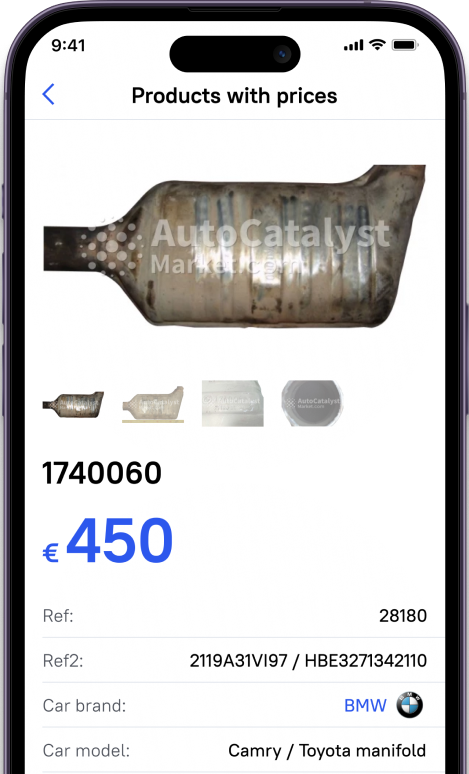- Problems with the DPF
- Regeneration of the Diesel Particulate Filter
- Filter Regeneration Process
- Methods of Soot Filter Regeneration
- Benefits of Regeneration for Vehicles
- Conclusion
Problems with the DPF
In the world today, there are numerous diverse models of catalytic converters and filters installed in vehicles, and over the years, they undoubtedly become significantly better and more efficient. One of the most in-demand and popular types of them is the diesel particulate filter (DPF). This particular type of catalyst is installed in practically every vehicle that uses diesel as fuel. This is because diesel cars produce the highest amount of particulate emissions, which can significantly exceed the norm. With the help of a DPF, many companies worldwide have achieved highly effective filtration of harmful emissions. However, if the DPF is so important, why do many people around the world remove this component from their vehicles? In reality, catalytic converters also come with several problems, which can sometimes be hidden from the eyes of ordinary car enthusiasts.
The first and most crucial reason why people remove the catalytic converter is a significant deterioration in the vehicle's performance. A cars with a clogged diesel particulate filter (DPF) can operate practically several times worse because the "cat" (popular shortened name) becomes an obstacle to the normal operation of the engine. If the exhaust system is clogged with soot, forget about the car working adequately. But if you ignore this problem, you might not even notice how your car breaks down due to the car converter.
The second major issue is an unpleasant odor or black smoke that may emanate from the vehicle's exhaust system. All of this is also due to the fact that the catalyst has simply malfunctioned and does not allow the car to function properly.
So, if there are even the slightest hints of diesel particulate filter problems, it's worth checking them for malfunctions.
Regeneration of the Diesel Particulate Filter

If you have noticed that your vehicle is noticeably performing worse, the first thing you should pay attention to is the catalytic converter. And if your diesel particulate filter is clogged, there are two solutions to this situation that can resolve it. The first option, available to everyone, is to sell your catalyst or have it recycled by companies that specialize in this. However, if a person no longer has a car converter, it will likely be impossible to drive the vehicle because it will emit black smoke. Therefore, the best option is to perform a regeneration of your DPF to renew it and give it a new lease of life.
Regeneration is a process in which the DPF is heated to high temperatures for an extended period. Through this process, all the soot that accumulates inside the component simply burns off and exits naturally. Usually, to do this, you need to understand the internal structure of the catalytic neutralizer. Therefore, it's not advisable to attempt it yourself; it's better to entrust it to people who know what they are doing. However, if that's not an option, you can do it yourself. You just need to drive at speeds between 110 km/h to 130 km/h for about thirty to forty minutes, and then you will sufficiently heat your filter for regeneration to occur.
Filter Regeneration Process

Regeneration of a soot filter is an important topic that lacks sufficient attention because, without it, maintaining the normal operation of your catalytic converter is impossible. As mentioned earlier, soot are just like any other component, and they have a tendency to get clogged or break. To ensure it operates smoothly for as long as possible, it's necessary to maintain its functionality. If the filter is not regularly checked, it is likely to become clogged, affecting not only the engine's performance but also the entire vehicle. Understanding how to properly care for your detail is essential.
Regeneration of the filter is a process that involves the interaction of additional fuel with the filter to heat the walls of the soot. When these walls, as well as the detail itself, reach high temperatures, all the unnecessary soot that hinders the normal functioning of the catalytic converter burns off. Typically, this procedure is not carried out at home but with the help of specialized equipment that monitors the condition of the catalyst and prevents overheating, for instance. So, if you notice a significant increase in exhaust emissions or your vehicle's performance noticeably declines, it is advisable to perform a catalytic converter regeneration to prevent it from becoming a hindrance to the entire vehicle's ecosystem.
Methods of Soot Filter Regeneration
In 2023, there are numerous methods available to regenerate a soot filter. The most popular methods still involve the injection of additional fuel during the injection cycle, and another widely used method is raising the gas temperature using special microwaves. There are many variations, but all aim to heat the filter as much as possible to make the accumulated soot simply disappear. Finding a replacement for the catalytic converter is quite challenging because soot filters are highly specific, and replacing them is not recommended due to their complexity. It's not just about the complexity, but also the fact that diesel vehicles without a DPF can emit incredibly toxic exhaust gases. By choosing one of the soot filter regeneration methods, a person can restore their detail in a matter of days and install it back in its original place, where it will continue to function for a significant amount of time.
Benefits of Regeneration for Vehicles
It's evident that by conducting regular inspections of your car and addressing issues at their early stages, your car is likely to operate for not just one year but possibly even for decades. The same applies to the catalytic converter; if you carefully monitor its condition and check for soot buildup, the catalyst is likely to work exceptionally well. The primary benefit of regenerating filters for vehicles is the thorough cleaning of all previously heavily clogged areas that hindered the normal operation of the engine and exhaust system. It's also worth noting that the more clogged the catalyst is, the lower the car's performance. So, by correctly regenerating the converter, there's a high likelihood that the vehicle's speed will increase. Taking into account all the processes mentioned above, a person who regularly performs catalytic converter regeneration will need to replace its components far less frequently because the car will operate better due to the clean part.
Conclusion
In conclusion, the soot filter is an indispensable component critical in any vehicle. This is because the catalytic converter purifies tons of harmful emissions every day. Therefore, if people did not clean their catalysts, there would likely be far less fresh air than there is now. At the first signs of problems with the soot filter, it should be checked and regenerated to ensure that the vehicle begin operating as they should.










































